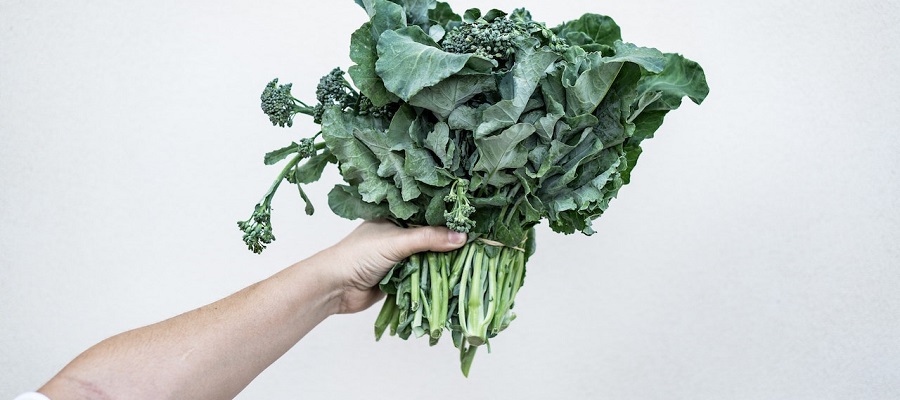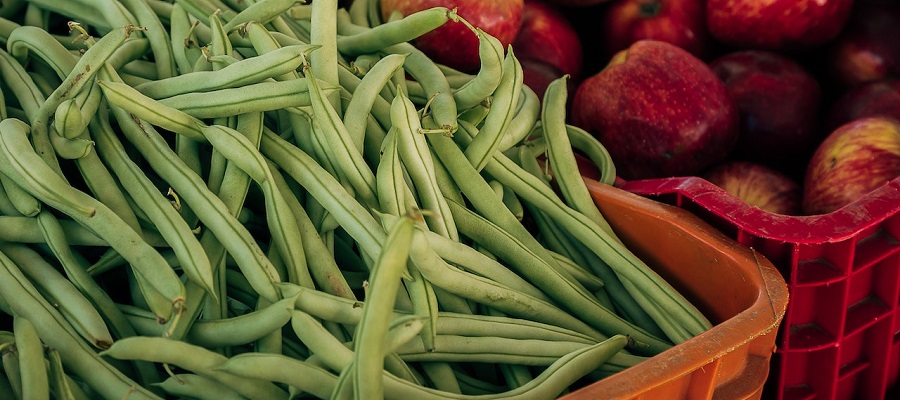Kale is a leafy green vegetable that belongs to the Brassica family, which also includes broccoli, cauliflower, and Brussels sprouts. It is a highly nutritious vegetable that is low in calories and high in vitamins, minerals, and antioxidants.
Kale is an excellent source of Vitamin K, Vitamin C, Vitamin A, Vitamin B6, Calcium, Potassium, and Manganese. It is also high in antioxidants, including beta-carotene, lutein, and quercetin. These antioxidants help to protect the body from free radical damage, which can lead to chronic diseases such as cancer and heart disease.
Kale can be eaten raw or cooked. When eaten raw, it can be added to salads or juiced. When cooked, it can be steamed, sautéed, or added to soups and stews. It has a slightly bitter taste and a tough texture, but when cooked it will become more tender and the flavor will be milder.
The recommended serving size for kale is 1 cup raw or 1/2 cup cooked. Consuming this amount regularly can provide significant health benefits.
It is also a good source of plant-based protein, and fiber which can help to support a healthy digestive system.
Kale is also low in carbohydrates, making it a suitable choice for individuals following a low-carb diet.
In summary, kale is a highly nutritious vegetable that is low in calories and high in vitamins, minerals, and antioxidants. It can be eaten raw or cooked and can be easily incorporated into a variety of dishes. It's a great addition to a healthy diet.
What nutrients and vitamins does kale contain?
Kale is a nutrient-dense food and contains a wide range of vitamins and minerals. Some of the key nutrients and vitamins found in kale include:
-
Vitamin K: Kale is an excellent source of Vitamin K, which is essential for blood clotting and maintaining strong bones. It contains more Vitamin K per serving than almost any other food.
-
Vitamin C: Kale is also high in Vitamin C, which is important for immune system function and collagen production.
-
Vitamin A: Kale contains high levels of Vitamin A, which is important for vision, skin health, and immune system function.
-
Vitamin B6: Kale is a good source of Vitamin B6, which is important for brain function and energy metabolism.
-
Calcium: Kale is high in calcium, which is essential for bone health and muscle function.
-
Potassium: Kale is high in potassium, which is important for maintaining healthy blood pressure and heart function.
-
Manganese: Kale is a good source of manganese, which is important for bone health, wound healing, and antioxidant defense.
-
Antioxidants: Kale is also high in antioxidants such as beta-carotene, lutein, and quercetin. These antioxidants help to protect the body from free radical damage, which can lead to chronic diseases such as cancer and heart disease.
-
Fiber: Kale is also high in fiber, which is important for maintaining a healthy digestive system and promoting feelings of fullness.
-
Protein: Kale is also a good source of plant-based protein which is essential for building and repairing muscle tissue.
These are just some of the key nutrients and vitamins found in kale, but it also contains many other beneficial compounds such as flavonoids, carotenoids, and polyphenols.
How does kale compare to other leafy greens in terms of nutritional content?
Kale is considered to be one of the most nutritious leafy greens available. It is high in vitamins, minerals, and antioxidants, and is relatively low in calories. Here is how kale compares to some other common leafy greens in terms of nutritional content:
-
Spinach: Spinach is also high in Vitamin K and Vitamin A, but it contains less Vitamin C than kale. Spinach is also a good source of folate and iron, but it contains less calcium and potassium than kale.
-
Collard greens: Collard greens are similar to kale in terms of nutritional content. They are also high in Vitamin K and Vitamin A, and contain similar amounts of Vitamin C, calcium, and potassium. Collard greens also contain slightly more Vitamin E and Vitamin B6 than kale.
-
Swiss chard: Swiss chard is similar to kale in terms of nutritional content. They are also high in Vitamin K, Vitamin A and Vitamin C. Swiss chard is also a good source of magnesium, potassium, and iron.
-
Broccoli: Broccoli is also a member of the Brassica family, like kale and it's also a nutrient-dense food. It is high in Vitamin C, Vitamin K, and Vitamin A, as well as fiber and potassium. But, it contains less Vitamin B6 and calcium than kale.
-
Romaine lettuce: Romaine lettuce is lower in calories and less nutrient-dense than kale. It is a good source of Vitamin K and Vitamin A, but it contains less Vitamin C, Vitamin B6, calcium, and potassium than kale.
Overall, kale is considered to be one of the most nutritious leafy greens available, with a unique combination of essential vitamins, minerals, and antioxidants. It is higher in Vitamin K, Vitamin C, Vitamin A, Vitamin B6, Calcium, Potassium, and Manganese than other leafy greens.
Can kale be eaten raw or does it need to be cooked?
Kale can be eaten both raw and cooked. When eaten raw, it can be added to salads, juiced, or used as a topping for sandwiches and pizzas. Raw kale has a slightly bitter taste and a tough texture, but it can be made more palatable by massaging it with a dressing or marinade before eating.
When cooked, kale becomes more tender and the flavor becomes milder. It can be steamed, sautéed, or added to soups and stews. Cooking kale can also increase the bioavailability of certain nutrients, such as beta-carotene, which is an antioxidant that is converted to Vitamin A in the body.
It is important to note that cooking kale reduces the Vitamin C content. So, if you want to get more Vitamin C, it is better to eat it raw.
Consuming a combination of raw and cooked kale can provide you with a balance of both the raw and cooked benefits.
Another way to enjoy kale is by dehydrating it to make kale chips, a crunchy and delicious snack.
Regardless of how it is consumed, kale is a highly nutritious vegetable that can be easily incorporated into a healthy diet.
How much kale should be consumed for optimal health benefits?
The recommended serving size for kale is 1 cup raw or 1/2 cup cooked. This serving size can provide significant health benefits when consumed regularly as part of a balanced diet.
However, it is also important to keep in mind that nutrient needs may vary depending on an individual's age, sex, weight, and level of physical activity. It is always best to consult with a healthcare professional to determine the appropriate serving size for your specific needs.
It is also important to note that consuming large amounts of kale may interfere with the absorption of certain nutrients, such as iron and calcium, due to the presence of oxalates. Oxalates are naturally occurring compounds found in certain plant foods that can bind with minerals like calcium and iron, making them less absorbable.
To get the most out of your kale, it is best to enjoy it as part of a balanced diet that includes a variety of fruits, vegetables, whole grains, lean proteins, and healthy fats.
In summary, the recommended serving size for kale is 1 cup raw or 1/2 cup cooked, but it is always best to consult with a healthcare professional to determine the appropriate serving size for your specific needs. And it is important to balance your diet with other nutrient rich fruits and vegetables.
What are the health benefits of consuming kale?
Kale is a highly nutritious vegetable that offers a wide range of health benefits. Some of the key health benefits of consuming kale include:
-
Cardiovascular health: Kale is high in antioxidants and anti-inflammatory compounds, which may help to lower the risk of heart disease. The Vitamin K in kale also helps to prevent blood clots, which can lead to heart attacks and stroke.
-
Cancer prevention: The antioxidants and anti-inflammatory compounds in kale may also help to lower the risk of certain types of cancer, such as colon, bladder, and ovarian cancer.
-
Digestive health: Kale is high in fiber, which is important for maintaining a healthy digestive system and promoting feelings of fullness. The fiber in kale can also help to lower cholesterol levels and regulate blood sugar.
-
Bone health: Kale is high in calcium, which is essential for bone health and muscle function. The Vitamin K in kale also helps to improve bone health by increasing bone density.
-
Eye health: Kale is high in lutein and zeaxanthin, two antioxidants that are important for eye health. These antioxidants help to protect the eyes from damage caused by UV light and may also lower the risk of age-related macular degeneration.
-
Anti-inflammatory: Kale is high in Omega-3 fatty acids, which have anti-inflammatory properties and can help reduce inflammation throughout the body.
-
Weight loss: Kale is low in calories and high in fiber, which makes it a great food for weight loss. The fiber in kale can help to promote feelings of fullness, which can help to reduce overall calorie intake.
In summary, kale is a highly nutritious vegetable that offers a wide range of health benefits, including cardiovascular health, cancer prevention, digestive health, bone health, eye health, anti-inflammatory, and weight loss. Adding kale to your diet can be an easy way to improve your overall health and well-being.


